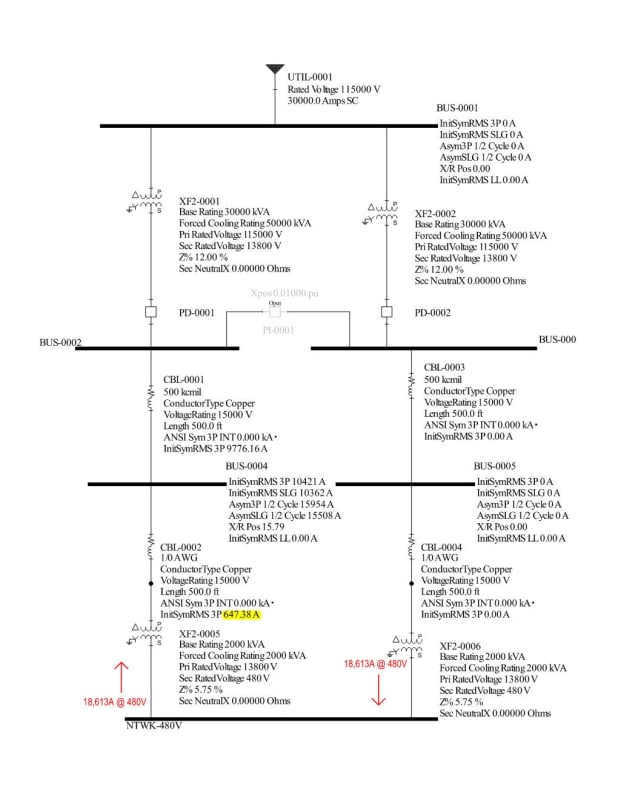kartracer087
Electrical
So I ran a quick study in SKM to see what happens if you run a substation with (2) transformers that step 138kV down to 13.2kV. The substation I experimented with had a bus tie breaker between the two transformers. The substation was serving a 2-transformer spot network with each transformer connected to a different 13.2kV bus. When I ran a short circuit calc faulting one of the primary feeders with the substation 13.2kV tie breaker closed, I was getting in the range of 6,000A backfeed on the 480V side of the spot network. Of course, I ran this again with the bus tie open at the station, and the result didn't suprise me. I saw that the fault current backfeed on the 480V side of the secondary network went up as high as 30,000A. Now with this being said, does this create serious concerns that if you ran a station with an open bus tie that you could potentially have very strong fault currents flowing on the secondary bus backfeeding the network? I am wondering because I notice that some utlities have spot networks from separated (not tied) bus sections, and my first thought is "well that's probably not good" having that kind of magnitude flow through the secondary side each time there is a fault on the primary side. What are your thoughts and experiences with this, and has it been generally acceptable if you do have those levels of fault flow through the secondary side on a primary backfeed? Maybe it isn't that big of a deal and the secondary buswork and equipment has historically been able to cope. But then again, what about network protector fuses, surely if those saw those kinds of fault current, they would melt? Edit: well, I guess if you had an instantaneous overcurrent relay at the substation that would clear the fault in 5 cycles your network protector and the substation 13.2kV feeder breaker can beat some of the larger protector fuses. But still..


